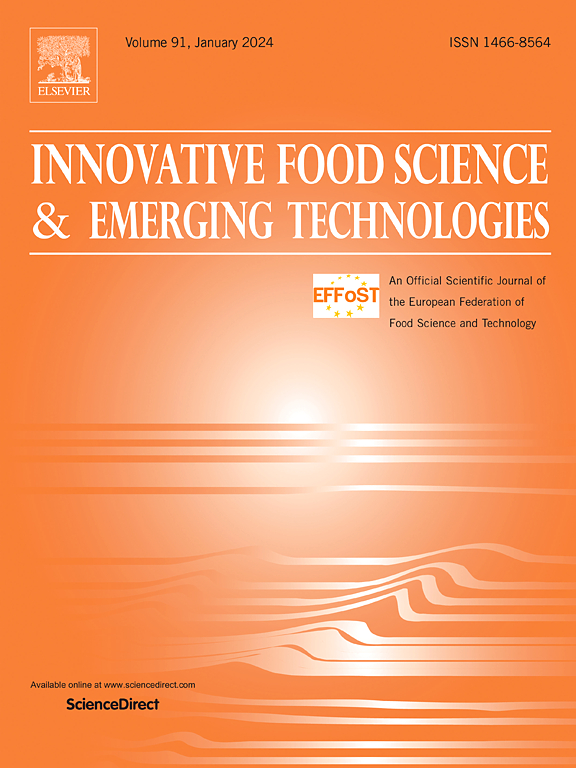Comprehensive evaluation of microwave reheating performance using predictive complementary relative phase shifting strategy in a solid-state system
IF 6.3
1区 农林科学
Q1 FOOD SCIENCE & TECHNOLOGY
Innovative Food Science & Emerging Technologies
Pub Date : 2025-07-10
DOI:10.1016/j.ifset.2025.104113
引用次数: 0
Abstract
Solid-state microwave technology offers a potential solution to the nonuniform heating limitations of magnetron-based microwave ovens. A previously developed dynamic predictive complementary relative phase shifting strategy has demonstrated superior performance in simple model foods compared to fixed phase shifting approaches but needs evaluation on commercial/prepared meals and comparison with magnetron-based heating. This study comprehensively evaluated the reheating performance of solid-state microwave heating using the dynamic strategy across five commercial and/or prepared food products: Pulled Chicken (single component), Beef in Gravy (multicomponent), Lasagna (multilayer), Pulled Chicken & Lasagna (multicompartment), and Mashed Potato & Beef in Gravy (multicompartment), and compared their heating performances with that in domestic microwave heating with rotational turntable. Results revealed that the dynamic predictive complementary relative phase strategy significantly improved microwave heating performance across most food products compared to the magnetron-based heating. The predictive complementary algorithm dynamically selected relative phases that generated complementary heating patterns to the real-time heating performance. This led to an overall improvement of 4.6 % in the heating uniformity and 22.9 % on average temperature rise compared to the magnetron-based heating. Hence, this study confirms that predictive complementary relative phase shifting strategies present a promising advancement for next-generation solid-state microwave ovens, enabling more precise and efficient reheating of complex food matrices.
基于预测互补相对相移策略的固态系统微波再加热性能综合评价
固态微波技术为磁控管微波炉的不均匀加热限制提供了一个潜在的解决方案。与固定相移方法相比,先前开发的动态预测互补相对相移策略在简单模型食品中表现出优越的性能,但需要对商业/预制食品进行评估,并与磁控管加热进行比较。本研究综合评估了固态微波加热在五种商业和/或预制食品中的再加热性能:拉丝鸡肉(单组分),肉汁牛肉(多组分),千层面(多层),拉丝鸡肉&;千层面(多层)和土豆泥;肉汁牛肉(多室),并将其加热性能与家用旋转转盘微波加热进行了比较。结果表明,与磁控管加热相比,动态预测互补相对相位策略显著提高了大多数食品的微波加热性能。预测互补算法根据实时供热性能动态选择产生互补供热模式的相对相位。与基于磁控管的加热相比,这使得加热均匀性总体提高了4.6%,平均温度上升了22.9%。因此,本研究证实,预测互补相对相移策略为下一代固态微波炉提供了一个有前途的进步,可以更精确、更有效地再加热复杂的食物基质。
本文章由计算机程序翻译,如有差异,请以英文原文为准。
求助全文
约1分钟内获得全文
求助全文
来源期刊
CiteScore
12.00
自引率
6.10%
发文量
259
审稿时长
25 days
期刊介绍:
Innovative Food Science and Emerging Technologies (IFSET) aims to provide the highest quality original contributions and few, mainly upon invitation, reviews on and highly innovative developments in food science and emerging food process technologies. The significance of the results either for the science community or for industrial R&D groups must be specified. Papers submitted must be of highest scientific quality and only those advancing current scientific knowledge and understanding or with technical relevance will be considered.

 求助内容:
求助内容: 应助结果提醒方式:
应助结果提醒方式:


